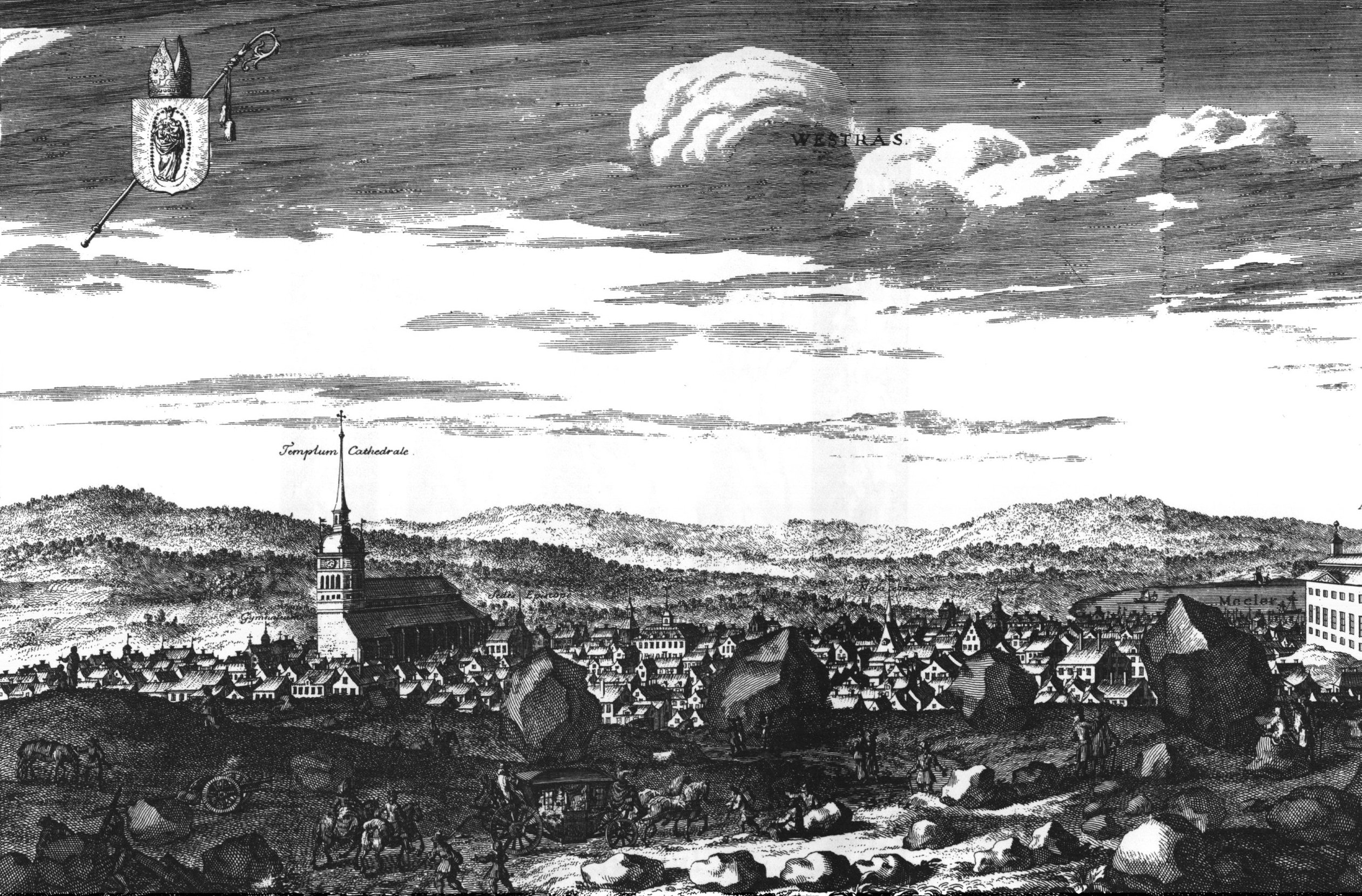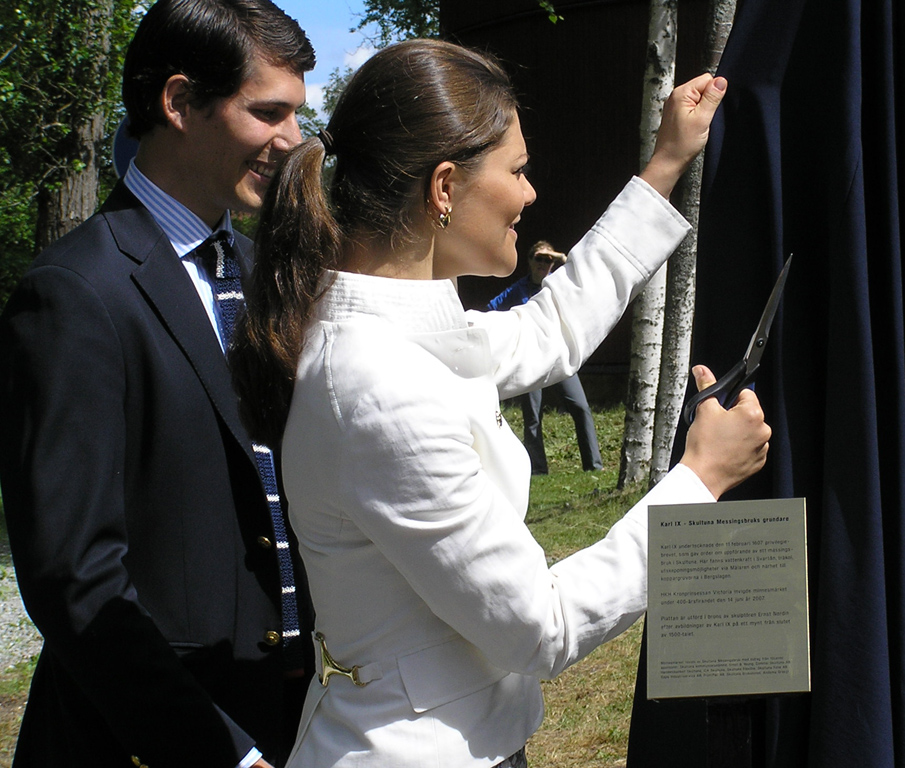|
Svartån
Svartån in Västmanland County, Sweden is 91 kilometers long. It passes through the towns of Skultuna and Västerås and has its outlet in Mälaren. The name Västerås derives from the Sueco-Latin term ''Västra Aros'' meaning "western outlet." The river played an important role in the industrial development in this region from the 17th century until the early 20th century as a source for hydropower. Small-scale hydroelectric dams are located in Västerås (the Turbine House and at Falkenberg's Mill), Skerike, and Skultuna Skultuna () is a locality situated in Västerås Municipality, Västmanland County, Sweden with 3,133 inhabitants in 2010. Skultuna has some of Sweden's oldest industrial sites (including an early 17th-century brassworks, Skultuna Messingsbruk) ..., among others. The river also provided power for the many water wheels associated with Skultuna's centuries-old copper foundry Skultuna mässingsbruk. Västerås Rivers of Västmanland County ... [...More Info...] [...Related Items...] OR: [Wikipedia] [Google] [Baidu] |
Västerås
Västerås ( , , ) is a city in central Sweden on the shore of Mälaren, Lake Mälaren in the province of Västmanland, west of Stockholm. The city had a population of 127,799 at the end of 2019, out of the municipal total of 154,049. Västerås is the seat of Västerås Municipality, the capital of Västmanland County and an episcopal see. History Västerås is one of the oldest cities in Sweden and Northern Europe. The name originates from ''Västra Aros'' (West Aros), which refers to the river mouth of Svartån. The area has been populated since the Nordic Viking Age, before 1000 CE. In the beginning of the 11th century it was the second largest city in Sweden, and by the 12th century had become the seat of the bishop. Anundshög is located just outside the City of Västerås. Anundshög is Sweden's largest burial mound. "Hög" is derived from the Old Norse word ''haugr'' meaning mound or barrow. It was built about 500 CE and is over wide and is almost high. In the ensu ... [...More Info...] [...Related Items...] OR: [Wikipedia] [Google] [Baidu] |
Skultuna Mässingsbruk
Skultuna Messingsbruk (literally, "''Skultuna Brass Works''") is a Swedish manufacturer of brass and brass products. Founded in 1607 at the behest of King Karl IX, Skultuna Messingsbruk is located in Skultuna on the outskirts of Västerås. The logotype of Skultuna consists of the closed royal crown, the name "Skultuna" and the founding year "1607". Early history In the year 1607, King Karl IX could at last implement his long held plans for a Swedish brass industry. He had a man sent off on the Crown's business to find a suitable location for a brass foundry. The choice fell on Skultuna, where the Svartån brook provided sufficient water power. Charcoal was available here as well, there was a harbor in Västerås and the copper mine at Falun was also close. Skultuna Messingsbruk was founded and the king's decision confirmed in a letter dated 11 February 1607. The work could proceed. The history of the brass foundry During the time of Gustav Wasa and Erik XIV, Sweden had become inde ... [...More Info...] [...Related Items...] OR: [Wikipedia] [Google] [Baidu] |
Västmanland County
Västmanland County ( sv, Västmanlands län) is a county or '' län'' in central Sweden. It borders the counties of Södermanland, Örebro, Gävleborg, Dalarna and Uppsala. The county also has a stretch of shoreline towards Mälaren (Sweden's third largest lake). Province ''For history, geography and culture, see: Västmanland (Westmannia)'' Administration The main aim of the County Administrative Board is to fulfil the goals set in national politics by the Riksdag and the Government, to coordinate the interests of the county, to promote the development of the county, to establish regional goals and safeguard the due process of law in the handling of each case. The County Administrative Board is a Government Agency headed by a Governor. See List of Västmanland Governors. Politics The County Council of Västmanland or ''Landstinget Västmanland''. Riksdag elections The table details all Riksdag election results of Västmanland County since the unicameral era began in 1970. ... [...More Info...] [...Related Items...] OR: [Wikipedia] [Google] [Baidu] |
Sweden
Sweden, formally the Kingdom of Sweden,The United Nations Group of Experts on Geographical Names states that the country's formal name is the Kingdom of SwedenUNGEGN World Geographical Names, Sweden./ref> is a Nordic country located on the Scandinavian Peninsula in Northern Europe. It borders Norway to the west and north, Finland to the east, and is connected to Denmark in the southwest by a bridgetunnel across the Öresund. At , Sweden is the largest Nordic country, the third-largest country in the European Union, and the fifth-largest country in Europe. The capital and largest city is Stockholm. Sweden has a total population of 10.5 million, and a low population density of , with around 87% of Swedes residing in urban areas in the central and southern half of the country. Sweden has a nature dominated by forests and a large amount of lakes, including some of the largest in Europe. Many long rivers run from the Scandes range through the landscape, primarily ... [...More Info...] [...Related Items...] OR: [Wikipedia] [Google] [Baidu] |
Skultuna
Skultuna () is a locality situated in Västerås Municipality, Västmanland County, Sweden with 3,133 inhabitants in 2010. Skultuna has some of Sweden's oldest industrial sites (including an early 17th-century brassworks, Skultuna Messingsbruk) as well as two runestones. Skultuna was also the birthplace of: * Julia Nyberg (1784-1854), author and songwriter * Esbjörn Svensson (1964-2008), pianist, composer, and band leader * Magnus Öström Magnus Öström (born 3 May 1965) is a Swedish drummer, and known for being part of the first Esbjörn Svensson Trio (e.s.t.). Biography Öström was the son of an artist couple, and was influenced by the musical tastes of his older brothe ... (born 3 May 1965), drummer, composer, and band leader. Svennson and Öström were childhood friends who formed their first band in Skultuna. References External links Populated places in Västmanland County Populated places in Västerås Municipality {{Västmanland-geo-stub ... [...More Info...] [...Related Items...] OR: [Wikipedia] [Google] [Baidu] |
Mälaren
Mälaren ( , , or ), historically referred to as Lake Malar in English, is the third-largest freshwater lake in Sweden (after Vänern and Vättern). Its area is 1,140 km2 and its greatest depth is 64 m. Mälaren spans 120 kilometers from east to west. The lake drains, from south-west to north-east, into the Baltic Sea through its natural outlets Norrström and Söderström (as it flows around Stadsholmen island) and through the artificial Södertälje Canal and Hammarbyleden waterway. The easternmost bay of Mälaren, in central Stockholm, is called Riddarfjärden. The lake is located in Svealand and bounded by the provinces of Uppland, Södermanland and Västmanland. The two largest islands in Mälaren are Selaön (91 km2) and Svartsjölandet (79 km2). Mälaren is low-lying and mostly relatively shallow. Being a quite narrow and shallow lake, Mälaren has bridge crossings between Eskilstuna and Västerås with two crossings on the western end at Kvicksund and t ... [...More Info...] [...Related Items...] OR: [Wikipedia] [Google] [Baidu] |
Swedish Language
Swedish ( ) is a North Germanic language spoken predominantly in Sweden and in parts of Finland. It has at least 10 million native speakers, the fourth most spoken Germanic language and the first among any other of its type in the Nordic countries overall. Swedish, like the other Nordic languages, is a descendant of Old Norse, the common language of the Germanic peoples living in Scandinavia during the Viking Era. It is largely mutually intelligible with Norwegian and Danish, although the degree of mutual intelligibility is largely dependent on the dialect and accent of the speaker. Written Norwegian and Danish are usually more easily understood by Swedish speakers than the spoken languages, due to the differences in tone, accent, and intonation. Standard Swedish, spoken by most Swedes, is the national language that evolved from the Central Swedish dialects in the 19th century and was well established by the beginning of the 20th century. While distinct regional varieties ... [...More Info...] [...Related Items...] OR: [Wikipedia] [Google] [Baidu] |
Latin Language
Latin (, or , ) is a classical language belonging to the Italic languages, Italic branch of the Indo-European languages. Latin was originally a dialect spoken in the lower Tiber area (then known as Latium) around present-day Rome, but through the power of the Roman Republic it became the dominant language in the Italy (geographical region), Italian region and subsequently throughout the Roman Empire. Even after the Fall of the Western Roman Empire, fall of Western Rome, Latin remained the common language of international communication, science, scholarship and academia in Europe until well into the 18th century, when other regional vernaculars (including its own descendants, the Romance languages) supplanted it in common academic and political usage, and it eventually became a dead language in the modern linguistic definition. Latin is a fusional language, highly inflected language, with three distinct grammatical gender, genders (masculine, feminine, and neuter), six or seven ... [...More Info...] [...Related Items...] OR: [Wikipedia] [Google] [Baidu] |
Industrial Revolution
The Industrial Revolution was the transition to new manufacturing processes in Great Britain, continental Europe, and the United States, that occurred during the period from around 1760 to about 1820–1840. This transition included going from hand production methods to machines, new chemical manufacturing and iron production processes, the increasing use of steam power and water power, the development of machine tools and the rise of the mechanized factory system. Output greatly increased, and a result was an unprecedented rise in population and in the rate of population growth. Textiles were the dominant industry of the Industrial Revolution in terms of employment, value of output and capital invested. The textile industry was also the first to use modern production methods. The Industrial Revolution began in Great Britain, and many of the technological and architectural innovations were of British origin. By the mid-18th century, Britain was the world's leadi ... [...More Info...] [...Related Items...] OR: [Wikipedia] [Google] [Baidu] |
Hydropower
Hydropower (from el, ὕδωρ, "water"), also known as water power, is the use of falling or fast-running water to Electricity generation, produce electricity or to power machines. This is achieved by energy transformation, converting the Potential energy, gravitational potential or kinetic energy of a water source to produce power. Hydropower is a method of sustainable energy production. Hydropower is now used principally for Hydroelectricity, hydroelectric power generation, and is also applied as one half of an energy storage system known as pumped-storage hydroelectricity. Hydropower is an attractive alternative to fossil fuels as it does not directly produce Carbon dioxide in Earth's atmosphere, carbon dioxide or other Air pollution, atmospheric pollutants and it provides a relatively consistent source of power. Nonetheless, it has economic, sociological, and environmental downsides and requires a sufficiently energetic source of water, such as a river or elevated lake. Int ... [...More Info...] [...Related Items...] OR: [Wikipedia] [Google] [Baidu] |
Small Hydro
Small hydro is the development of hydroelectric power on a scale suitable for local community and industry, or to contribute to distributed generation in a regional electricity grid. Exact definitions vary, but a "small hydro" project is less than 50 megawatts (MW), and can be further subdivide by scale into "mini" (<1MW), " micro" (<100 kW), "" (<10 kW). In contrast many hydroelectric projects are of enormous size, such as the generating plant at the at 22,500 megawatts or the vast multiple projects of the |



.jpg)



.jpg)